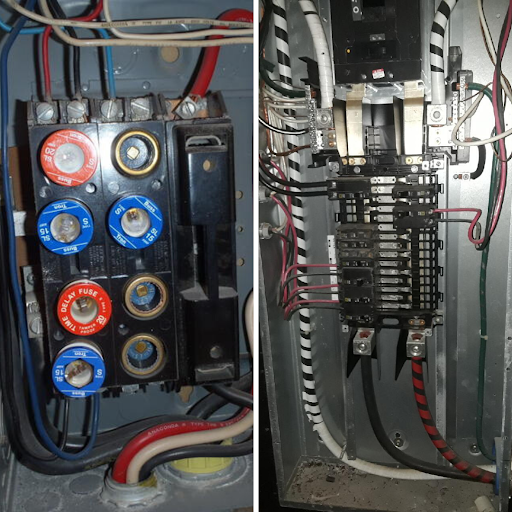A fuse is a crucial electric safety component present in the fuse box. It automatically turns off power to a circuit when an electrical problem arises to prevent further damage. They contain metal filaments that burn when the fuse blows. If your fuse blows, you will have to change the fuse in a fuse box.
What makes a fuse blow?
- Overloaded circuit
If a circuit carries a bigger electrical load than it can, it will be overloaded. An overloaded circuit occurs when you try to operate too many appliances or turn on too many lights simultaneously. The fuse size at your home is matched to the load capacity. An excessive load will blow the fuse. If the fuse blows too often, it indicates that your electrical needs are too much for your circuit.
- Short circuit
A short circuit occurs when the wires carrying an electrical current touch each other or any other current-carrying component. It can be caused due to numerous factors like loose connections, bad insulation, or wires chewed up by rodents.
- Faulty appliances
Even if the wiring of one appliance is faulty or has a loose connection, it can blow the fuse box. Check for faulty appliances and replace them immediately. If you aren’t sure which appliance is causing the fuse to blow, call a qualified Electrician.
How to Fix a Fuse in a Fuse Box
- Turn off all the lights and unplug appliances in the part of your home which has lost power. This will make sure that the new replacement fuse doesn’t get overloaded.
- Turn off the main power switch. This will disconnect power to the fuse box and keep you safe.
- Locate the blown fuse. You can identify a blown fuse by looking for a discolored or cloudy fuse or a broken or melted metal piece inside the fuse box.
- with the main power still off, unscrew the blown fuse and remove it. Replace the fuse with a new fuse of the same amperage, size, rating, and type. Attempting to replace with a higher amperage can be dangerous and can cause serious damage to the panel wiring.
- Screw the new fuse into the same electrical panel socket.
- Restore the main power to the electrical panel.
Remember that changing a fuse or identifying the cause of a blown fuse can be dangerous. If you do not know what you are doing, do not hesitate to bring in a professional electrician.
For more information or assistance during normal business hours, call or e-mail TPS at the phone number above. You can also complete and submit our Service Project Inquiry form.

